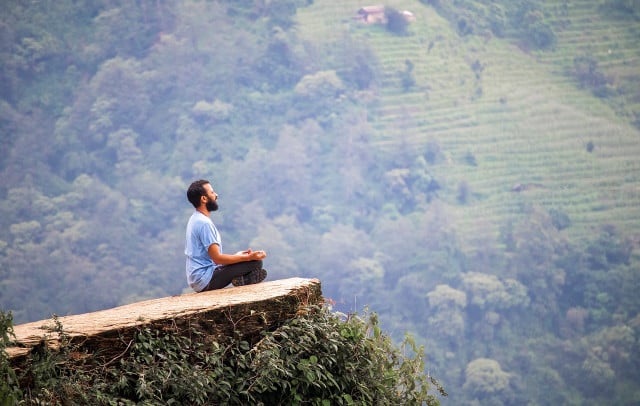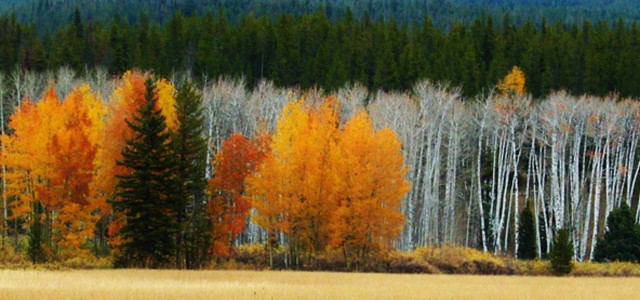Can spending time in nature really reduce stress? The practice of forest bathing can actually do a whole lot more. Learn how to reap the benefits here.
Forest bathing is a practice that originated in Japan as a physiological and psychological exercise called shinrin-yoku. It involves spending time in a natural environment and engaging with your surroundings.
The practice is a great way to connect with nature and improve mental health and well-being. However, it is important to do it safely and responsibly and keep sustainability in mind. In this article, we will explore what forest bathing is, the benefits of this practice, and where you can try it.
What Is Forest Bathing?

Forest bathing, also known as shinrin-yoku, is a practice that involves immersing yourself in a natural environment, such as a forest, and connecting with nature through your senses. It is based on the principle of mindfulness and encourages people to connect with nature in an intentional way.
Many believe it has a profound healing power that can positively impact our mental, emotional and physical health. But it may also help to address deeper issues. For instance, forest bathing can help foster a sense of environmental stewardship by encouraging people to value the natural world and prioritize its protection.
What Are the Benefits of Forest Bathing?



Forest bathing has numerous psychological, environmental, and health benefits. According to a 2019 study, forest bathing has been found to reduce stress, anxiety and depression.
In two experiments mentioned in this study, forest bathing was found to have significant effects on the autonomic nervous system. Researchers found that approximately 80% of the subjects showed increased parasympathetic activity (the part of the nervous system that helps you relax) in a forest setting, which resulted in lowered heart rate and blood pressure and a state of calm.
The same study reported that since exposure to high noise levels and increased levels of air pollution outdoors appears to hurt cardiovascular health, spending time in nature could be an effective way to reduce cardiovascular risk.
Evidence suggests that forest bathing may indirectly assist in positive environmental outcomes. According to recent research, maintaining biodiversity is a prerequisite for successful forest bathing. This is because the essence of the practice relies on a healthy forest to promote its many benefits. As such, many developing countries have directly or indirectly maintained biodiversity to encourage forest bathing among their residents or eco-tourists.
Although forest conservation is mainly done to help the economy and public health, it is still an environmental win if forests are protected.
For instance, the research highlights how crucial forest bathing can be during times of crisis for the population’s health. They suggest that shifting from a health issue-oriented approach to an emergency management-oriented approach (for example, using forest bathing to calm public anxiety in times of crisis) could provide more sustainable development opportunities in the long run by encouraging public engagement with the conservation and preservation of forests.
How Can You Forest Bathe Locally?



What is forest bathing without the forest? You don’t need a designated state or national forest nearby to try forest bathing locally. Any green area with trees, foliage, or greenery will also work. Ideall, this would be a wooded area that’s free from noise pollution. The location is less important than how it makes you feel, so look for a spot that feels peaceful and calming to you.
Follow these tips to make the most of the experience:
- Take your time, and walk slowly. As you walk along the path or observe from a resting spot, try to engage all your senses and actively listen, smell, touch and look. Take in the essence of the forest and release any tension.
- Listen to your breath and breathe deeply. Feel free to try different activities such as yoga, tai chi, meditation, drawing or specialized breathing techniques. Whatever you do, try to be in the present, paying attention to small details such as the sound of your footsteps, the rustle of the wind or the crunching leaves beneath you.
- Appreciate the silence and take in the sounds of the forest. Let the silence overtake you. Use the quiet moment to rest and heal. Taking a time out and letting your mind focus on the present can lead to increased well-being and a deeper connection to the natural world. Hopefully your connection with nature will also inspire you towards eco-friendly practices that keep forests safe and healthy.
The Best Spots in the US
If you have the ability to leave your local area, there are many gorgeous spots throughout the US that you can try for forest bathing:
- Muir Woods National Monument, California: This park is located just outside of San Francisco and is home to towering redwood trees, some over 1,000 years old.
- Olympic National Park, Washington: This park boasts a diverse landscape that includes old-growth forests, alpine meadows and a rugged coastline spread out over nearly a million acres.
- Adirondack Park, New York: This massive park in upstate New York covers over six million acres and is home to over 3,000 lakes and ponds, as well as miles of hiking trails through pristine forests.
- Bridger-Teton National Forest, Wyoming: This park is located on 3.4 million acres of land and has many recreation opportunities. While it is also a part of the Greater Yellowstone area, it is a quieter, less tourist-dense spot to immerse yourself in forest bathing.
- Acadia National Park, Maine: This park on the coast of Maine is known for its dramatic cliffs and sweeping ocean views, but it also boasts over 47,000 acres of diverse forested lands that are perfect for forest bathing.
To enjoy forest bathing safely and responsibly, avoid littering, stay on designated trails and try not to disturb wildlife. It’s also essential to pack appropriate gear and let someone know the route and return time if you’re planning to walk alone.
Read more:
- How Is a Forest Defined? Describing These Vital Ecosystems
- Forest Conservation: Definition & 7 Impactful Methods
- Silvopasture: Pros and Cons of the “Forest Farming” Principle
Important Information regarding Health-related Topics.
** Links to retailers marked with ** or underlined orange are partially partner links: If you buy here, you actively support Utopia.org, because we will receive a small part of the sales proceeds. More info.Do you like this post?







